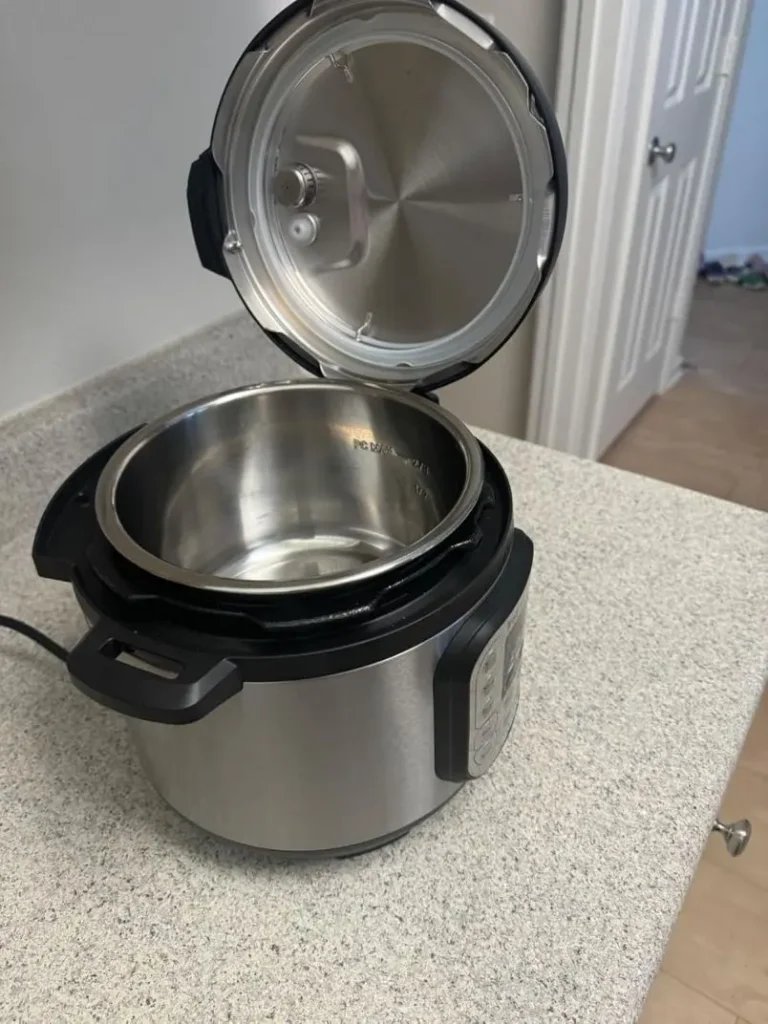We independently review everything we recommend. When you buy through our links, we may earn a commission.
Convert Slow Cooker Recipes to Instant Pot in 5 Easy Steps
The day I received my Instant Pot felt like the morning of a new year. I excitedly unpacked the box and started brainstorming about what I would cook first. Then, I took a good hard look at all those buttons and realized it definitely wasn’t the same as my everyday slow cooker. It was a sophisticated appliance and I had a lot of learning to do.
Luckily, it didn’t take long for me to learn how to get the most out of the Instant Pot, and soon I had several reasons to love the Instant Pot.

Once I got the hang of how to use my new favorite kitchen tool, I started learning how to make slow cooker to Instant Pot conversions for all of my favorite slow cooker recipes. By following a few simple rules, I was able to whip up all fabulous foods in a fraction of the time.
There’s a lot to love about the Instant Pot. The sophisticated appliance can make anything from hearty stews to perfect oatmeal with the press of a button — plus, those dishes can often be made in a fraction of the time! And, if you have a favorite slow cooker recipe that you don’t have all day to make, you can easily use the Instant Pot instead. Though it may seem intimidating at first, converting slow cooker recipes to your pressure cooker is fairly easy — just follow the steps below!
1. Measure your liquid
Unlike a slow cooker, which produces extra liquid from condensation, the Instant Pot requires at least one cup of liquid per dish. Because it’s a pressure cooker, the Instant Pot needs to build up steam before it can cook, and too little liquid can cause the food to burn or dry out.
You can use water, stocks, juices, or thin sauces, but be mindful of the ingredients. A thick, creamy sauce or canned “cream of” soup will not build up enough steam, so save those for adding at the end of the cooking cycle.
If you’re worried about your recipe becoming too watered-down, you can always set the ingredients atop the Instant Pot’s included trivet. Alternatively, you can use the sauté function after you’ve pressure cooked to burn off some of the extra liquid.
2. Mind the size
Though a slow cooker can be filled to the brim (if desired), an Instant Pot needs extra room in order to pressurize. As a general rule, keep the ingredients below the “max fill” line in your Instant Pot, about two-thirds full. If you’re cooking something that expands, like beans or rice, limit the pot to half full.
Additionally, keep the density of your ingredients in mind. A thick cut of meat, like a pot roast or pork shoulder, takes longer to cook than other ingredients. In that case, cut the meat into 1-inch chunks or consider cooking in stages. For example, start by cooking pork shoulder and releasing the pressure. Then, add your vegetables and cook with the saute function or pressure cook again for one to five minutes.
3. Hold off on the thickeners
As we already mentioned, creamy ingredients are best saved for adding to the pot after the pressure has been released. This includes dairy products, like milk and sour cream, and canned “cream” soups.
Similarly, hold off on thickening agents, like cornstarch or arrowroot, until after you’ve finished the pressure cooker setting. If a recipe calls for flour-coated chicken, for example, saute the chicken without the flour and add a thickening agent before serving.
4. Convert the timing
Slow cooker recipes can take anywhere from four to eight hours, but an Instant Pot meal can be ready in just 20 minutes. To find the best cooking times for your dish, use the Instant Pot cooking time table, which includes guides for seafood, grains, meats, vegetables, fruits, and beans.
As a general guideline, if your slow cooker soup, stew, or meat takes four hours on the “high” setting or eight hours on the “low” setting, it will take about 25 to 30 minutes in the Instant Pot.
A few caveats:
- Frozen meats can be cooked in the Instant Pot, but you’ll need to add extra time.
- For most meats, add about 10 extra minutes to the cooking time. If it’s not enough, you can always put the lid back on and pressure cook again.
- Seafood will only need a few extra minutes, and suggestions are included in the cooking timetable.
- Additionally, the Instant Pot will need up to 20 minutes to come to pressure and up to 15 minutes to release, so keep that in mind when planning your meal.
5. Consider adding your ingredients in stages
Since meat and vegetables are cooked at drastically different timings, you may not want to add them at the same time as you do in your slow cooker. If your meat is cut into 1-inch or smaller pieces, it should be safe to toss them in together. But, if you’re using a larger chunk of meat, like pot roast or pork shoulder, make the recipe in stages. Start by cooking the meat first and releasing the pressure. Then, add the vegetables and either simmer using the Sauté function or cook under pressure for an additional 1 to 5 minutes.
